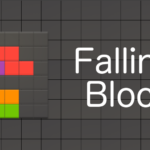Everything You Need to Know About Solitaire: Layout, Basic Rules, Helpful Tips

You probably know Solitaire as one of the standard classic games presented in Windows operating systems since the 90s. While the earliest records of this game played with physical cards appeared in the 1700s in Northern Europe and Scandinavia, Solitaire card games have become extremely popular with advancements of computers. You might have tried it at least once. But if not, here’s everything you need to know to play Solitaire!
Your Goal and the Rank of Cards
To play, you simply need a standard 52 card deck or just a device with Solitaire installed. In any case, the objective of the game is to move the cards on the layout carefully to create sequences from Ace to the King. If you manage to stack all 52 cards in four piles, Spades, Hearts, Diamonds, and Clubs, you win! In some variations of Solitaire online, you have to know the ranks of the cards to play right. There, the Aces go for 1, the cards from deuces to tens are connected with their numbers, and Jacks, Queens, and Kings count 11, 12, and Web Here.
Set up
Generally, the deck is divided into four types of piles in a game of classic Solitaire. These are as follows:
1. Tableau
The Tableau consists of a total of seven separate columns. The first of them has one card; the second has two and this continues till seven. Only the topmost card of each pile is laid upwards.
2. Stock (Hand)
All the cards left after creating the tableau are referred to as the stock. That is where additional cards are drawn from as the game progresses.
3. Foundations
The foundation area is where you will create the piles of cards in ascending order starting from the aces of all the suits to win the spider-solitaire-masters.com. These will be empty at the beginning.
4. Talon (Waste)
One or a set of 3 cards is drawn from the stock. Only the top card is faced upwards and this can be added to the tableau or one of the foundations to progress the game.
Playing
As it comes from the above information, at the start of the game, the tableau will be laid out along with 4 empty spaces for the foundations and the stock next to it. Then, start moving cards remembering the following:
- The cards in the layout can be rearranged and built down but they should be alternate colors. For example, you cannot place a 2 of spades below a 3 of clubs. You can only place it below a 3 of hearts of 3 of diamonds.
- If you move a card to another tableau column or a foundation, the card below can be turned upwards and becomes included in the gaming process. Additionally, if one of the tableau piles becomes devoid of cards, it creates a “space”. This can only be filled with a King.
- Don’t forget to transfer any aces you find to the foundations so that you can progress the game.
- Once you have exhausted movements within the tableau, you can start drawing cards from the stock. These can then be arranged in the foundation or the layout according to the aforementioned rules. You can also move the topmost card from the foundation back to the tableau if the need arises.
Conclusion
Now you have an idea of how to play the seemingly simple but intricate game of Solitaire. It will take some time to get better at it, as with most things. But it will be worth the result! Try different types of free Solitaire or play physically with a deck.
Now go forth and conquer!



Leave a Reply
You must be logged in to post a comment.